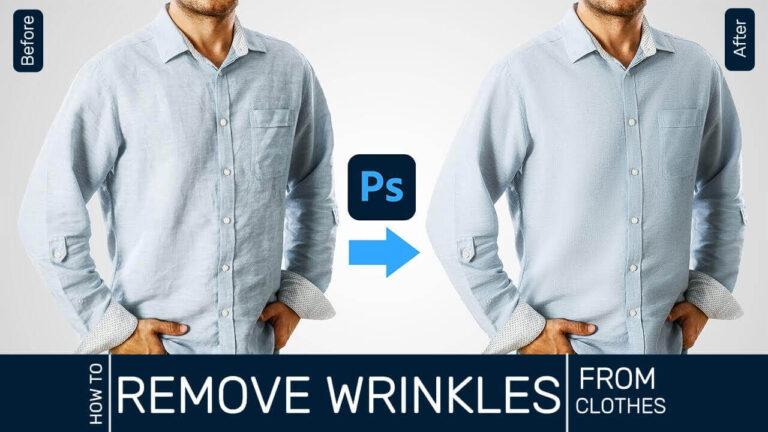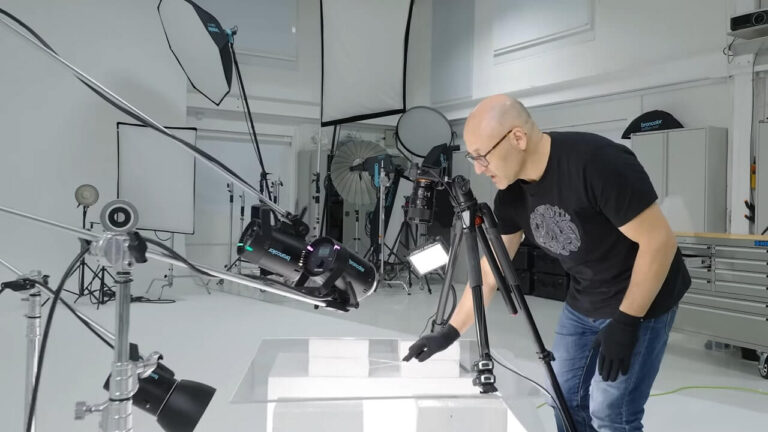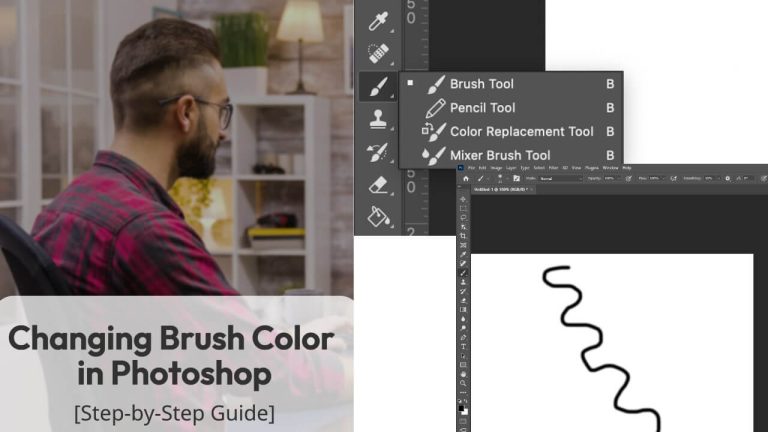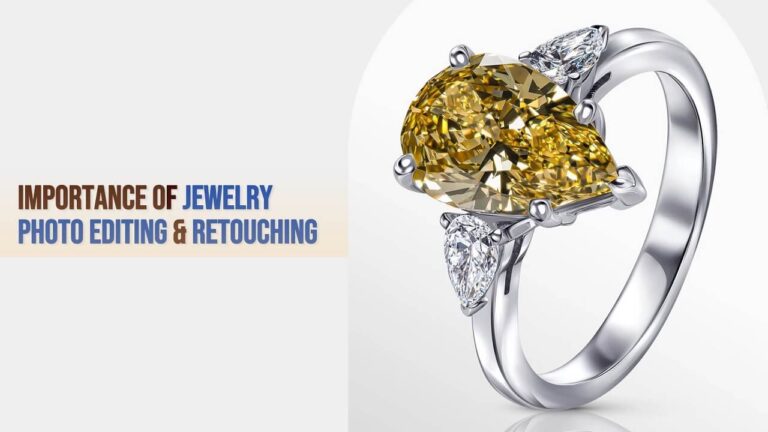In today’s digital world, e-commerce business owners heavily rely on product images. Most of them display their products on multiple online stores where the images are the only way to convey the message.
Customer conversion and sales are dependent on the quality of product images. Therefore, ecommerce retailers need to edit their product images and make them look vibrant, attractive, and appealing before presenting them to the end customer. In this article, I’ll show you how you can edit your product images in Photoshop easily and effectively.
Product Background Removal in Adobe Photoshop
Selecting the product and removing it from the background is one of the major image editing tasks for ecommerce photos. Product photography can not always result in a perfect image background. Therefore, the removal of the existing one and adding a new consistent background helps to keep the focus of the customer on the product. Thus, the product features are only highlighted, enhancing the aesthetics of the image.
Background removal manually
The pen tool is the most reliable and accurate manual background removal tool in Photoshop. To remove your image background, first, you need to select the product that you want to isolate from your background. Pen tool is a selection tool. You will find it in the toolbar.

Using the pen tool, start selecting the product by creating paths around the edges of the product. After the product or subject has been selected successfully, delete the background of the image. You have now created a transparent background. The subject can be placed on a white background to make the product look professional.
Background removal with automatic tool
In Photoshop, there are a number of automatic tools that can select the subject of the image without manual effort. Although these tools do not always give the best output, they are quite impressive if there’s a clear, bright contrast between the background and the subject.

The magic wand tool is one of the most popular automatic selection tools in Photoshop. It is also a selection tool, which you can find in the toolbar. If you want to remove the background of the subject, then just click on it. The tool will automatically select the subject by creating moving ants around it. You can now remove the background by isolating the subject that has been selected.
Blemish removal from ecommerce product photos
Blemish and imperfection removal is a basic image editing and retouching task for photo editors. In this post-production process, the retouchers use various tools and techniques to remove blemishes, scratches, dust, or other imperfections of the image that the photographer captured inadvertently. There are a number of blemish-removal tools in Photoshop that you can select according to the needs and demands of the situation. Below are a few examples.
The Healing Brush tool

The healing brush tool is a great way to remove an unwanted stop in your product image. Find this tool in the healing brush toolbox. After selecting this tool, move your mouse pointer to the product image and select an expected color or part of the product that you want as a replacement for the blemish. Then, you just click on the area of imperfection and see the magic. The preselected part of the image will replace your blemishes.
Clone Stamp tool

The clone stamp tool is also a great tool in Photoshop, which can move a specific area of an image and make a clone of it. How can this tool help you remove a blemish from your photo? The answer is simple. First, you need to select the tool from the toolbar, alt+click on the area that you want to clone as a replacement for the blemish, and finally, paint it on the part of the image that you want to remove.
The Patch tool

Patch tool is also a popular Photoshop tool for blemish removal. To use this tool, you need first to select the tool from the toolbar. Move your mouse pointer to the object or the imperfection that you want to remove and roughly create a selection around it. An area around the object will be selected by marching ants.
Drag the selected area of the image and move it to the area of color that you want as a replacement for it. After you carefully select the right area of replacement, release the mouse. Your object will be removed, and you’ll get a clean and desired look of your image.
Color manipulation of product images
Image editors use Photoshop to manipulate product color. Two common tasks are related to color in Photoshop – color matching and color change. In the color matching tasks, image editors use different tools to adjust the color of the product so that it matches the exact color of the product. On the other hand, the color change task is related to changing the color of the product completely to create new color options.
Color matching in Photoshop

As I’ve mentioned, color matching is a way of adjusting image color and tone. Adjusting the white balance to remove the color cast is an important step in this process. You can do it by either the levels or the curves. Let’s use the curves in this example.
When you create a new curve layer, you’ll find an auto button. Click on it, and Photoshop will do the adjustment for you. But make sure the Photoshop algorithm is using the ‘find dark and light color’ option to correct the white balance.
Another important aspect of color adjustment in Photoshop is adjusting the contrast and exposure. You can change the contrast and exposure in many different ways. For example, create a new adjustment layer, and you’ll find the option to change the contrast and brightness of your image. Now, you can adjust the exposure and contrast your image to find out the right color of the product.
Color change in Photoshop

Product color change is an important product photo editing task. In this process, the image editors completely change the color of the product to create different options for the viewers. To change the color of your product, first, you need to select the product or the part of it that you need to work on by object selection tool.
You can change the color of the selected part of the image by adding a layer mask. After applying the mask, see the adjustment layer and select ‘solid color’. Now select the color that you want and the color of the selection will change as you want. Now change different options, brightness, and contrast to fine-tune the color that looks natural.
Cropping and image resizing
Image cropping and resizing are vital tasks in product image editing. Cropping is necessary to eliminate the unnecessary parts of your image, whereas resizing the image is important to reduce the file size and match the requirements of different ecommerce platforms.

To crop your image, simply select the crop tool from the toolbar and drag it on the image to select the area you want to crop. If needed, reposition the image or adjust the selection area to make the cropping perfect. Finally, double click on the image and your selected area of the image will be cropped.
Resizing the image in Photoshop is quite simple. Navigate to the option bar and find the image option. You will see the image size option. By selecting this option, you can manually put the required size of your image that matches your requirement.
Wrinkle removal of clothing images
Wrinkles are bad for the overall aesthetic of the fashion photos. Clothing items are, therefore, free from unwanted wrinkles and creases. You can do it in post-production by applying some tools in Photoshop.

At first, you need to create two separate layers of the original image. Then, apply ‘Gaussian blur’ in the lower layer. Find this effect in the filter at the menu bar. Now, you can remove the wrinkle from the clothing item by using the mixer brush tool and the spot healing brush tool. However, you may need to apply some other filters based on the condition of the image.
Invisible mannequin effect
Invisible or ghost mannequin effect is a popular image editing service in the fashion industry. During this task, the image editors remove the mannequin or the model from a fashion item and give it a 3D effect. It looks like an invisible ghost is wearing the dress. A fashion item with this effect helps the customers understand the size, fitness, and design of the clothing item in a better way.

Although it may seem complicated, creating a ghost mannequin effect in Photoshop is quite straightforward. You need to create clipping paths around the intersection between the mannequin and the cloth to cut out the fashion item. After the cut-out is done, you will see that there are some missing parts of the clothing. Now, to fill up this missing part, you need another product image with a similar orientation but without the mannequin.
In the second part of this editing task, the image editors just put the cut out into the main picture of the clothing. After that, they edit the composition to give it a natural and realistic look. The editing task includes removing unnecessary parts of the clothing and matching color and shade. The final result of this editing work is an image composition that looks like a cloth worn by an invisible person.
Shadow addition
Shadow addition is another frequently required task in product photo editing. Why do you need to add shadows in product images? Well, the answer is quite simple. It is for making the image look natural and realistic. If you remove the original background of an image, the natural shadow goes away with it. Therefore, it is necessary to add an artificial shadow in the post-processing. Sometimes, the original shadow of the image does not look perfect. In such cases, we need to add shadows to make the image more appealing and realistic in the eyes of the viewers.

There are different types of shadow you can add in Photoshop, including drop shadow, reflection shadow, and cast shadow. However, drop shadow and reflection or mirror shadows are the most common that image editors use often.
Creating drop shadow in Photoshop

To create a drop shadow, you need to select the working layer first and double-click on the layer at the layer panel. A new window will pop up where you can choose the layer style. Select drop shadow to add shadow to your working layer. You can adjust opacity, color, angle, and other factors to get the required effect.
Crating reflection shadow in Photoshop
To create a reflection shadow in Photoshop, first, you need to duplicate your working layer. Then, flip the upper layer vertically and drag it under the second layer. Two different mirror images of the same product will be created. Now, you need to make the underneath image a reflection of the upper layer by adjusting some settings.
Add a layer mask at the lower layer, change the gradient, add a blur effect, and any other necessary adjustments to make the lower layer a real mirror image of the upper layer.
Conclusion
Whichever photo editing tools you are using in Photoshop, your key goal should be producing stunning, attractive images that make sales. Image editors and product photographers should focus on their goal and not just create good-looking photos. I have mentioned the most common image editing tasks performed by image editors to enhance product images. However, there can be other requirements that may demand a comprehensive experience in photo editing software like Adobe Photoshop.








